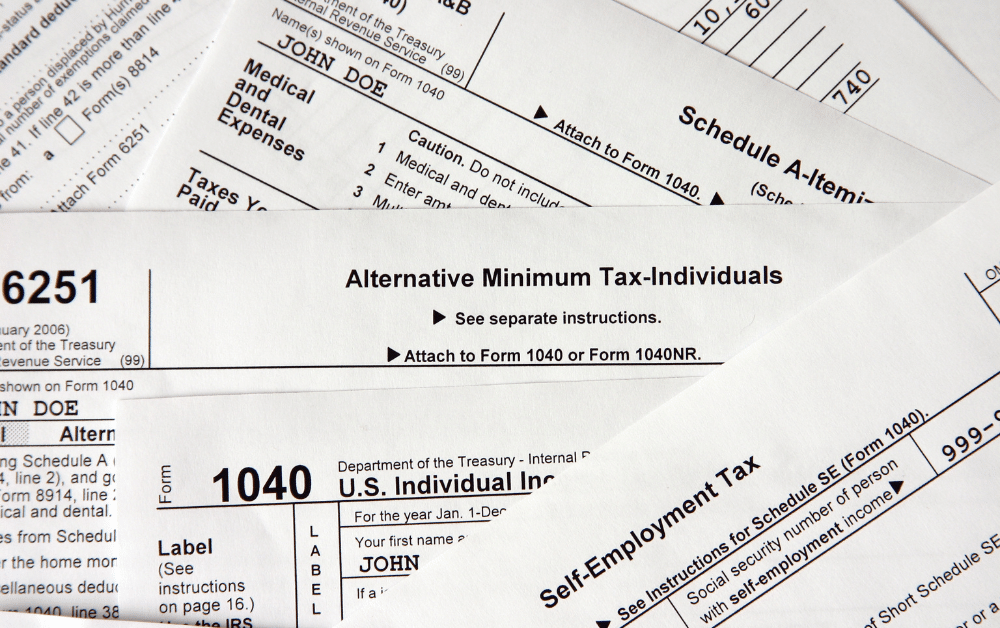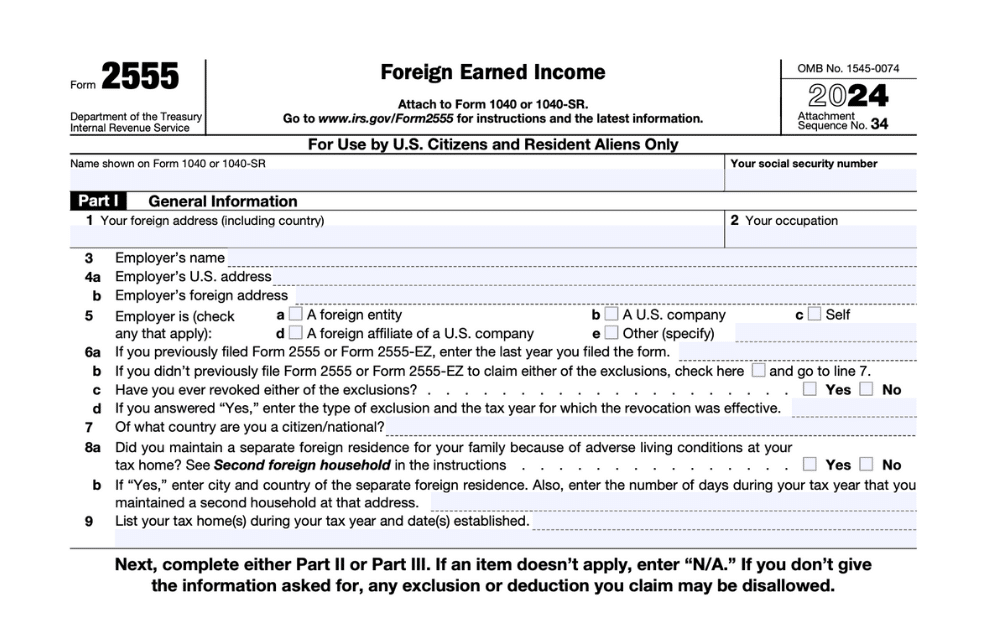Alternative Minimum Tax (AMT): A Guide for Americans Abroad

The IRS provides a variety of tax benefits for Americans living overseas. Using these benefits, most expats are able to erase their US tax bill entirely. However, in some cases, taxpayers will still be required to pay an alternative minimum tax (AMT) on their income. Here’s what you need to know about the AMT and your expat taxes.
Key Takeaways
- Some Americans are required to pay an alternative minimum tax (AMT) even if they would otherwise be exempt from taxation.
- The AMT only applies to US citizens with income above certain thresholds.
- Expats can use the Foreign Tax Credit to offset their AMT bill.
What Is the Alternative Minimum Tax (AMT)?
The Alternative Minimum Tax (AMT) is a separate tax calculation that was introduced by Congress in 1969 to ensure that high-income taxpayers pay a minimum amount of tax, even if they have access to deductions and credits that would otherwise reduce their tax liability.
The AMT calculation starts with regular taxable income and then adds back certain deductions and exemptions that are allowed under the regular tax system. This results in a higher income amount that is subject to a flat tax rate of either 26% or 28%, depending on the taxpayer’s income level.
The AMT threshold varies depending on filing status, with higher thresholds for married couples filing jointly. Taxpayers whose income exceeds the AMT threshold are required to calculate their tax liability under both the regular tax system and the AMT system and pay the higher of the two amounts.
It’s important to note that the AMT system can be complex and confusing, and taxpayers may need to work with a qualified tax professional to ensure they are meeting their obligations and maximizing their tax benefits.
Americans living abroad can also claim a variety of tax benefits, such as:

Who Has to Pay the Alternative Minimum Tax?
Technically, every US citizen is required to pay the AMT if their tax bill falls too low after any available tax deductions are applied. The easiest way to understand the AMT is to think of it as a tax floor: it’s the bare minimum taxpayers should expect to pay on their taxes. If you would normally be taxed at a lower rate than that minimum using the standard tax scheme, then you must pay the AMT instead.
All of that is true in theory. The good news is that, in practice, most Americans never need to pay the AMT.
AMT Exemptions
For the 2024 tax year, the Alternative Minimum Tax (AMT) exemption amounts are as follows:
| Filing Status | AMT Exemption Amount |
|---|---|
| Single or Head of Household | $85,700 |
| Married Filing Jointly or Qualifying Surviving Spouse | $133,300 |
| Married Filing Separately | $66,650 |
For example, let’s say you are living in Germany as a single taxpayer with an annual salary of $60,000. After applying the expat benefits available to you, you do not owe any US taxes under the standard tax rules. Normally, this would mean that your income would be taxed at the flat rate of the AMT instead. However, because your income is less than $85,700 (the exemption amount for your filing status), you will be exempt from the AMT.
How Is the Alternative Minimum Tax Calculated?
If you are required to pay the alternative minimum tax, you will generally only be taxed on the portion of income that exceeds your exemption amount. For example, if you file as married or filing jointly, the 2024 exemption amount is $133,300. If you and your spouse’s combined income for 2024 were $150,000, the alternative minimum tax would apply to the $16,700 of your income that exceeds the exemption ($150,000 – $133,300 = $16,700).
If your annual income reaches certain thresholds, then your exemption amount will start to phase out, and the AMT will apply to income that would normally be exempted. The threshold for this phaseout will vary based on your filing status. You can see the 2025 (2024 Tax Year) phaseout thresholds below:
AMT Exemption Phase-Out Thresholds for 2024:
| Filing Status | Phase-Out Begins | Phase-Out Complete |
|---|---|---|
| Single or Head of Household | $609,350 | $953,150 |
| Married Filing Jointly or Qualifying Widow(er) | $1,218,700 | $1,906,300 |
| Married Filing Separately | $609,350 | $953,150 |
Once your Alternative Minimum Taxable Income (AMTI) exceeds the phase-out threshold, the exemption amount is reduced by 25% of the amount by which your AMTI exceeds the threshold. This reduction continues until the exemption is fully phased out.
AMT Tax Rates for 2024:
| Filing Status | Income Level | AMT Rate |
|---|---|---|
| Single or Head of Household | $0 – $232,600 | 26% |
| Over $232,600 | 28% | |
| Married Filing Jointly or Qualifying Widow(er) | $0 – $232,600 | 26% |
| Over $232,600 | 28% | |
| Married Filing Separately | $0 – $116,300 | 26% |
| Over $116,300 | 28% |
To calculate your AMT liability, you start with your regular taxable income and make specific adjustments to arrive at your AMTI. If your AMTI exceeds the exemption amount for your filing status, you apply the AMT rates as shown above. If the resulting AMT is higher than your regular tax liability, you pay the AMT amount.
It’s important to note that the AMT system operates parallel to the regular tax system, and taxpayers are required to pay the higher of the two tax liabilities. Given the complexity of AMT calculations, consulting with a tax professional service like Greenback Expat Tax Services is advisable to ensure accurate tax reporting and compliance.
For more details on how to calculate the AMT, see the instructions for IRS Form 6251.

Special Considerations for US Expats
Due to the numerous credits and deductions in place to help eliminate dual taxation, many US citizens living abroad can erase their US tax bill entirely. And while the AMT was previously only a concern for the very wealthy, more and more expats are finding that they are subject to this tax.
When filing your expat tax return, it is always wise to check whether you are required to pay the AMT. A qualified expat tax professional will advise you on your AMT obligations. They can also help you optimize your tax strategy to minimize your bill.
Unfortunately, if you are required to pay the AMT, you will not be able to claim certain expat tax deductions. Specifically, the Foreign Earned Income Exclusion or Foreign Housing Deduction cannot be used to offset your AMT taxable income. However, the Foreign Tax Credit is still an option even when the AMT applies.
The Alternative Minimum Tax and the Foreign Tax Credit
Expats who are subject to the AMT can claim the Foreign Tax Credit to offset their AMT bill. In this case, the Foreign Tax Credit will not apply as a dollar-for-dollar credit as it typically would—but it will help you reduce your taxes all the same. Consult an expat tax professional to learn more about your options.
If you are required to pay the AMT, you may be able to claim a Minimum Tax Credit to offset your standard taxes in any future years when the AMT does not apply. You can do this by completing and attaching IRS Form 8801.
Still Have Questions about the Alternative Minimum Tax?
We hope this guide has helped you understand how the alternative minimum tax may impact your expat taxes. If you still have questions, we have the answers.
At Greenback Expat Tax Services, we specialize in helping Americans around the world manage their US tax obligations. Just Contact us, and we’ll be happy to help you in any way we can.
If you need very specific advice on your specific tax situation, you can also click below to get a consultation with one of our expat tax experts.



